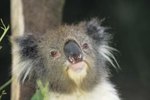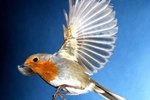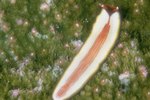
Scientists have classified about 5,000 species as mammals. According to the University of Michigan Museum of Zoology, there are only three characteristics unique to mammals. The three characteristics are mammary glands, hair and three middle ear bones. Other characteristics often thought to be unique to mammals are found in other species including birds, insects and reptiles.
Mammary Glands
Mammals got their name from this evolutionary adaptation. Mammary glands are only found on mammalian species, and no other species. Mammary glands evolved from modified sweat glands to produce milk for offspring. Only female mammals produce milk, an adaptation that requires an investment of time and energy to care for the newborn offspring.
Hair
Hair on mammals is an adaptation that provides insulation to keep the animal warm, provide protection to the animal's skin, provides camouflage through color patterns and helps the animal by providing greater sensory input through touch.
Middle Ear Bones
All mammals have three middle ear bones, commonly called the hammer, anvil and stirrup. Their scientific names are malleus, incus and stapes. The hammer and anvil evolved from the jaw bones from primitive mammal ancestors. These bones work together to transmit vibrations to the eardrum.
Sweat Glands
Sweat glands, while being unique to mammals, aren't present in all mammals. For example, the whale has no sweat glands, but doesn't need them because it lives in the ocean.
Temperature Regulation
While most mammals are warm-blooded, not all are able to regulate their temperature, which is the definition of being warm-blooded. Bats and mole rats can't regulate their body temperatures; whereas bees, birds and the hawk moth can.
Other Characteristics Not Unique to Mammals
Other characteristics not unique to mammals include live birth, determinate growth and a four-chambered heart. Some sharks give live birth to their young; whereas, two mammals, platypus and the echidna, lay eggs. Mammals are known to have determinate growth, but so do birds, and at least the American alligator. Four-chambered hearts aren't exclusive to mammals either, as both birds and crocodilians have them too.
References
- Museum of the Rockies: Osteohistological Evidence for Determinate Growth in the American Alligatorthe American Alligator
- University of Michigan, Museum of Zoologu ADW Animal Diversity Web: Mammalia, mammals
- tamuk.edu:Biology 4429 - chapter 2 Mammalian Characteristics
- The Infrared Zoo: Warm and Cold Blooded
- Animal Planet: How Are Shark Pups Born?
- National Geographic: Platypus
Photo Credits
-
Jupiterimages/Photos.com/Getty Images




